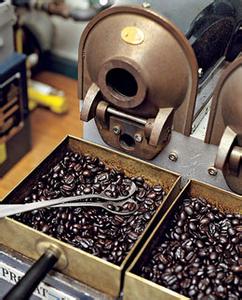Professional knowledge of coffee bean blending
Generally speaking, the following principles should be followed when matching:
1. Blending of raw beans requires the use of coffee beans with their own characteristics, and avoid using coffee beans with similar flavor. The choice of raw beans can be considered from three aspects:
Raw bean treatment method: that is, whether raw beans are treated by washing method or drying method, which has a lot to do with the flavor of coffee beans.
Producing areas of raw beans: coffee producing areas are generally divided into three major regions, including about 20 countries in Central and South America, namely, Brazil, Colombia, Guatemala, Mexico, Delvado, Jamaica and Peru, and about 10 countries in Southeast Asia, namely India, Indonesia (including Java and Sumatra) and Papua New Guinea. About 25 countries in the Arab and African regions, namely, Ethiopia, Kenya, Tanzania, Arabia, Uganda and so on.
Coffee bean flavor: refers to the coffee bean flavor of sour, bitter, sweet, alcohol which is more prominent, or all aspects of more balanced neutral beans. Now the most commonly used raw beans are Brazil, Colombia and Mocha.
two。 The number and proportion of coffee beans involved in blending
Since it is a blending, it naturally refers to the blending of more than two kinds of raw beans, but a special example is that it can also match the same kind of coffee beans with different roasting degrees, or even the new crop and aged coffee or old crop of the same kind of coffee beans, so the type referred to in the blending is no longer a coffee variety in a narrow sense, but extends to the flavor of coffee in a broad sense. Generally use 2 to 6 kinds of coffee beans when blending, too many kinds will not be able to show the unique flavor of coffee. Blended coffee usually does not take the 1:1 blending ratio, because this may suppress each other's unique flavor, so the blending must be primary and secondary in order to produce a better taste than a single coffee. If you want the coffee to taste complex and changeable, you can reduce the proportion of raw beans, and vice versa.
3. Coffee blending depends on constant attempts, so a blending schedule should be drawn up mathematically before blending, and then the best plan should be determined through the process of blending-tasting cups. Don't think that this is a negative and stupid approach. In fact, a good cup of coffee can only be made by the experience, inspiration and tireless attempt of the blender.

Important Notice :
前街咖啡 FrontStreet Coffee has moved to new addredd:
FrontStreet Coffee Address: 315,Donghua East Road,GuangZhou
Tel:020 38364473
- Prev

Top Blue Mountain Coffee
Blue Mountain Coffee is recognized as the best in the world because of its unique growing environment and the strict management of the Jamaican government.
- Next

Introduction to eight varieties of coffee beans
1. Blue Mountain Coffee (BLUE MOUNTAIN) is a coffee bean produced in Blue Mountain of Jamaica at an altitude of more than 2500 feet. It is a kind of coffee with slight acid, softness, sweetness and delicate flavor. Pure Blue Mountain Coffee tastes and smells light, but it tastes very mellow and exquisite. It is rated as having noble taste and is the best coffee. Mocha Coffee (MOCHA) is currently produced in Yemen.
Related
- Guji coffee producing area of Guji, Ethiopia: Humbela, Shakiso, Wulaga
- What is the most expensive variety of Qiloso in BOP multi-variety group?
- How to store the coffee beans bought home?
- Why are Yemeni coffee beans so rare now?
- Ethiopian Sidamo all Red Fruit Sun Sun Santa Vini Coffee beans
- SOE is mostly sour? What does it mean? Is it a single bean? what's the difference between it and Italian blending?
- Is Italian coffee beans suitable for making hand-brewed coffee?
- How to choose coffee beans when making cold coffee? What kind of coffee beans are suitable for making cold coffee?
- Just entered the pit to make coffee, what kind of coffee beans should be chosen?
- Can only Japan buy real Blue Mountain Coffee? What are authentic Jamaican Blue Mountain coffee beans?

